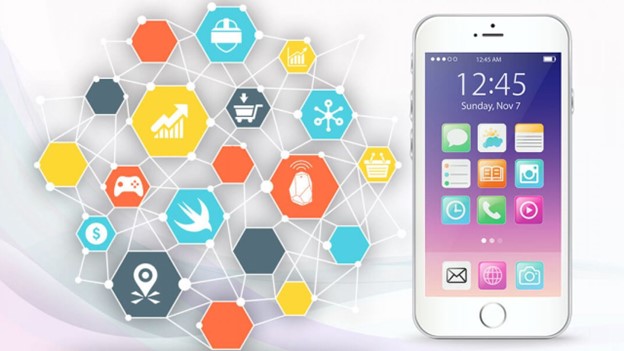Mobile applications are everywhere. Undoubtedly, they have become an integral part of our lives.
iOS app development is at the forefront of this movement.
And why wouldn’t it be?
It provides a fertile environment for creating cutting-edge, accessible iOS apps.
This area is where the change is starting to take off. It’s a driving force behind the current uprising. Users and programmers alike are gravitating toward Apple’s iOS ecosystem. This is because iOS has a more polished look, faster performance, and an easier-to-use interface.
With millions of apps in the App Store and managing hundreds of billions of downloads, the iOS Developers market has seen a continuous uptrend. iOS Development isn’t only for programmers or coders with years of experience. Data shows that there’s a significant number of creatives, students, and writers who are learning iOS Development.
Through this crash course, we want you to start with the basics. This is specifically designed for first-timers. So, even if you’ve never written a single line of code, you have nothing to worry about. We’ll cover everything for you.
If you’ve never attempted any form of coding before, you’re in the right place.
We are aware that embarking on a new adventure can be nerve-wracking. Once you have finished this crash course, you will have the fundamental information necessary to start designing iOS applications. So why wait?
Dive in and kickstart your iOS development journey!
Getting started with the iOS ecosystem
Why iOS development?
It’s important to remember that many businesses still need native iOS app developers. Therefore, if you have the necessary skills, finding work as a native iOS app developer shouldn’t be too difficult. iOS app development companies always look for credible developers to help strengthen their teams.
What is iOS development?
Creating software for products made by Apple is called iOS application development (often abbreviated as iDev). Typical examples include the Apple TV, iPhone, iPad, iPod, and Apple Watch.
iOS developers use Swift or Objective-C to create apps for Apple’s mobile operating system. After that point, the Apple App Store is the sole place where such programs are made accessible for download.
Its sophisticated and user-friendly design, stringent security features, and seamless integration with other Apple products and services have made it a household name. Apple has built a tightly linked environment with iOS, ensuring uniformity in performance and usability across its various offerings. The contribution of external developers was crucial to the achievement of this goal.
These devices have evolved to the point that they are an essential part of modern life and have also made it possible for programmers to create revolutionary programs available to millions of users worldwide.
Developers can create programs optimized for performance, security, and user experience on Apple devices because of the devices’ one-of-a-kind mix of hardware and software.
A step-by-step guide to iOS development
1. The Beginning Stage or Planning Stage
- Analyze basic requirements and conduct market research to stand out on the App Store.
- Build a skilled team with specific roles, including project manager, designers, developers, and QA specialists.
- Prepare technical design documents (TDD) for coordination and communication.
2. Create a Basic Design
- Design user interface and user experience, develop wireframes and mockups.
- Create a blueprint (wireframe) to visualize the app’s appearance and functionality.
3. Development Stage
- Developers work on the back-end, API, and front-end development.
- Choose relevant methodologies for effective development, repeatability, and traceability.
- Utilize iOS development platforms like Xcode and other frameworks as needed.
4. Use Relevant Methodology
- Effective processes ensure functionality, capability, and time reduction.
- Benefits include repeatability, standardization, continuous updates, and better maintenance.
5. iOS Development Platforms
- Xcode is the primary integrated development environment (IDE).
- Other platforms include Appery.io, GameSalad, Mobile Roadie, Xamarin, and more.
6. Back End Development
- Learn server-side coding for efficient iOS app development.
- Utilize frameworks like Node.js, .NET Core, and more for back-end development.
7. iOS App Development Technologies
- Utilize iOS frameworks like Apple Xcode IDE, Cocoa, UIKit, ARKit, and more.
- Choose relevant frameworks based on project needs, such as Ext JS, Ionic, React Native, etc.
8. Tools and Solutions
- Use tools and solutions beyond frameworks, including databases, APIs, and libraries.
- Consider ORMs (Object-Relational Mapping) and database tools like SQLite, Core Data, Realm, and more.
9. iOS Front-End Development
- Enhance the user experience by integrating iOS native capabilities.
- Front-end development is client-side or client-server development.
10. Expanding Into the Cloud
- Connect your app to the cloud for storage, database management, and augmentation.
- Utilize services like Kitura and REST APIs within the app.
11. Perform Testing
- Test the app on various iOS operating systems, and use automated UI testing in Xcode.
- Employ TestFlight for internal and external testing, and gather user feedback.
12. Deployment Stage
- Submit the app to the App Store, follow the guidelines, and complete the submission process.
- Build the App Store page using App Store Connect, and pay attention to app certification.
13. iOS App Development: Supporting Stage
- Address bugs and provide support during the maintenance stage.
- Adapt the app for new devices and OS updates.
14. Best Practices in iOS App Development
- Maintain proper documentation, follow app store rules, and focus on security from the beginning.
- Start with a minimum viable product (MVP), prioritize great design, and consider accessibility.
15. iOS App Development Cost
- The cost depends on complexity and functionality, with game apps costing more.
- Costs can vary based on location, with differing rates in the USA, UK, India, Bangladesh, and Ukraine.
To Sum Up
You shouldn’t have any trouble completing each stage of the iOS app development process as long as you closely follow the guidance above. When it comes to enhancing one’s performance, though, there is no substitute for regular practice. Make sure you PRACTICE.
Set aside at least an hour each day to develop your coding skills. Because if this is the case, creating code will never be a scary task for you.
Keep in mind that developing a great iOS app requires more than just having a solid concept. Before creating an iOS app, one must have the appropriate planning, procedures, and resources.
What are you going to do while you wait?
Get started right now with the development of your iOS app!



